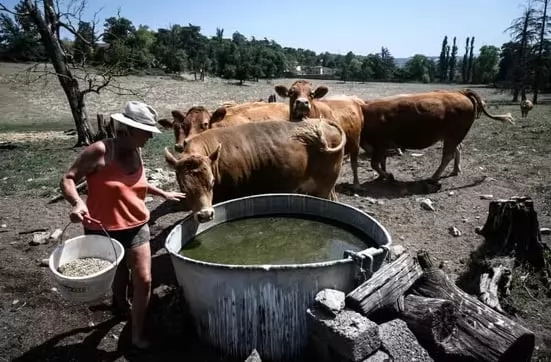Vietnam taps into growing Australian demand for shrimp

Vietnam's shrimp exports to the Australian market continuously increase in the first months of the year. Photo: Son Trang.
(VAN) Amid tariff risks and growing trade barriers in the U.S. market, Australia is emerging as a promising destination to sustain the growth momentum of Vietnam's shrimp exports.
As Vietnam's shrimp exports face pressure from trade defense measures, particularly the threat of reciprocal tariffs being imposed by the U.S., seeking and expanding into potential export markets has become a matter of survival for shrimp enterprises. In this context, Australia is assessed as a market with stable growth potential that aligns with the industry's strategy to enhance added value.
According to Ms. Phung Thi Kim Thu, shrimp market expert at the Vietnam Association of Seafood Exporters and Producers (VASEP), Australia is currently one of the most promising markets that align with the shrimp industry's strategy of developing deeply processed products to enhance added value. “Australia not only maintains steady demand but also highly appreciates high-quality shrimp with clear traceability. This is an advantage that Vietnamese enterprises should fully leverage,” Ms. Thu emphasized.
In fact, Australia is now Vietnam's fifth-largest single market for shrimp, accounting for roughly 7% of the country's total shrimp export value. In the first four months of 2025 alone, shrimp exports to Australia reached nearly USD 77 million, up 8% compared to the same period last year.
During the 2019-2024 period, Vietnam's shrimp export turnover to Australia increased consistently, from USD 127 million to over USD 240 million. Whiteleg shrimp accounts for 95% of export volume, with processed products such as shrimp skewers, shrimp dumplings, steamed shrimp, and peeled shrimp accounting for around 40% of the total turnover. This reflects a consumption trend toward convenient, value-added products, a segment that aligns well with the existing processing capabilities of Vietnamese enterprises.
According to Ms. Kim Thu, Vietnam's shrimp is enjoying significant advantages in the Australian market, largely thanks to the implementation of various Free Trade Agreements (FTAs), including the Comprehensive and Progressive Agreement for Trans-Pacific Partnership (CPTPP), the Regional Comprehensive Economic Partnership (RCEP), and the ASEAN-Australia-New Zealand Free Trade Agreement (AANZFTA). These FTAs not only reduce tariffs but also facilitate customs clearance, improve supply chain access, and promote standard transparency.
In addition, the Comprehensive Strategic Partnership between Vietnam and Australia, established in March 2024, provides a solid political foundation to further strengthen bilateral cooperation in the agricultural and fishery sectors.
With processed seafood consumption in Australia increasing by an average of 6–8% annually, along with rising demand for convenience food and a large Vietnamese community, Ms. Thu believes Australia is a market suitable for Vietnam's processed shrimp products.
“If Vietnamese businesses can fully capitalize on this market, Australia could become a strategic driver to help the shrimp industry maintain its growth momentum, especially at a time when traditional markets such as the U.S. are becoming less accessible due to tariff barriers,” she added.
3 scenarios for seafood exports
According to the Vietnam Association of Seafood Exporters and Producers (VASEP), if the U.S. decides not to impose reciprocal tariff (0% tariff rate) after July 9, Vietnam’s fisheries sector could still achieve its export target of USD 10 billion, on par with 2024.However, under a scenario in which reciprocal tariffs are set at 10%, total export turnover could drop by approximately USD 500 million, falling to USD 9.5 billion. The higher cost of Vietnamese products in the U.S. market would weaken their competitiveness compared to rival suppliers.
In a worst-case scenario, where reciprocal tariffs exceed 10%, Vietnam's seafood exports may only reach USD 9 billion or possibly even less.
Author: Ha Duyen
Translated by Thu Huyen
Maybe you are interested

Farmers in southwest France express growing concern over the ongoing heatwave
Orchardists, winegrowers and livestock farmers fear the negative impact of the current heatwave on their production.

India: Antibiotics in poultry is a growing concern
The inability of poultry breeding companies to prevent chicks from being infected with a bacteria is forcing producers to turn to antibiotics at an early stage.

How will Vietnamese shrimp exports be in the last months of the year?
(VAN) Shrimp is Vietnam's seafood with the largest export value. However, shrimp exports suffered the strongest decline in the first half of this year. What about exports in the last six months of the year?





